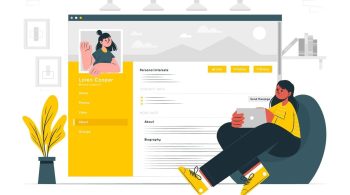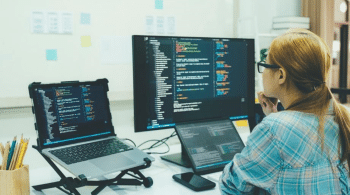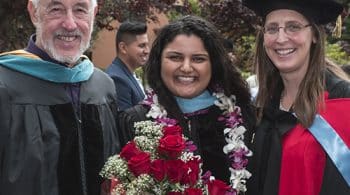So you’ve decided to become a teacher – that’s awesome! Teaching is a meaningful and rewarding profession. But let’s be honest; it can also be challenging, especially when working with students withdifferent abilities and learning needs. In such a situation, you want to ensure all your students get the education and support they need to thrive.
With preparation and the right mindset, you can become a great teacher for differently-abled students. Here are a few tips to help you.
Know your students’ needs
To successfully teach differently-abled students, you must understand each student’s unique needs. Find out what physical, emotional, and learning support is already in place and what can be improved. This may include things like seating arrangements, assistive technologies, or modified lesson plans and assignments.
You should also do the following:
Learn how each student communicates best. Identify any assistive communication devices they use and how you can incorporate them into your teaching.
- Discuss medical needs and emergency procedures. Be aware of conditions like seizures, allergies, or sensory sensitivities and how to respond appropriately.
- Identify strengths and learning styles. Focus on utilizing strengths and engaging lessons for different learning styles through audio, visual, and kinesthetic activities.
- Build a partnership with parents and caregivers. Maintain open communication and ask for their input to gain valuable insights into students’ needs and the best ways to support them.
Advance your education
Studying behavior management, assistive technology, assessment, curriculum adaptation, and other relevant courses will equip you with the skills to create lessons that cater to students’ strengths and support their needs.
You can also opt for a masters in special education online to learn skills and strategies for teaching differently-abled students on a flexible schedule. With an online program, you can study at your own pace and even keep working as you earn your degree. Look for programs that offer concentrations or certifications in areas like autism spectrum disorders or learning disabilities so you can focus on the topics most relevant for your students.
Adapt your teaching methods
Since the classroom will have students with unique learning abilities, you need to adapt your methods so that you can teach them all effectively. This will ensure the class progresses as a group and no one’s left behind. Try the following strategies:
- Focus on students’ abilities, not disabilities. Accommodate their needs but treat them like any other student.
- Use multiple teaching strategies. Combine visual, auditory, and hands-on activities to engage different learning styles like slideshows, videos, discussions, interactive apps, and role play.
- Provide clear and consistent instructions. Give one direction at a time and have students repeat instructions to confirm understanding. Use step-by-step checklists or visual schedules.
- Offer choices when possible. Let students have some control over how they learn and show what they know.
- Check for comprehension regularly. Ask open-ended questions and have students explain concepts or demonstrate skills in their own words. Provide immediate feedback and re-teaching as needed.
- Use technology to assist learning. Audiobooks, text-to-speech and speech-to-text software, interactive apps, and online learning platforms can help overcome barriers. But don’t rely solely on technology.
Break learning tasks down into smaller parts
Learning large chunks of information can be difficult for differently-abled students. Don’t overload them with too much too much at once. Present ideas and skills step-by-step. Focus on one central concept or topic per lesson. Keep things simple and avoid distractions. Here are some ways to go about this:
- Explain the goal and purpose of each lesson. Provide an outline so students know what to expect.
- Start with the basics. Build up gradually to more complex ideas and skills. Give students plenty of time to grasp foundational concepts before moving on.
- Provide multiple examples and allow for hands-on practice. Give students opportunities to apply their knowledge through guided practice activities with your support and feedback.
- Ask questions to gauge comprehension and see if students need further explanation or practice. Look for signs students may be struggling and provide extra guidance.
Limit distractions
Limiting distractions is important for helping differently-abled students focus and learn. Minimize chaos in the classroom by doing the following:
- Establish clear rules, schedules, and procedures so students know what to expect. This provides stability and makes the environment feel secure.
- Reduce excess noise. Loud sounds from electronics, classmates, or outside sources can be over-stimulating. Play calming music, and use a sound machine or headphones to block external noise.
- Harsh fluorescent lights can cause discomfort for some students. Use natural light when possible or incandescent lighting at a moderate intensity.
- Remove clutter. A messy, disorderly space with lots of visual stimulation is distracting. Keep the classroom tidy and organized, with clear walking paths. Store supplies, books, and materials out of sight when not used.
Use multi-sensory/visual aids
Multi-sensory learning engages students through sight, sound, and touch. Images, diagrams, charts, models, videos, and interactive apps or software can convey ideas that words alone may not. For students with learning disabilities or impairments, these alternative learning methods can make the difference between grasping a concept and being left confused.
Provide written handouts or slide presentations with bullet points and visuals, not just text. Let students follow along and take their notes in a way that makes sense. Some may draw pictures, diagrams, or doodles to represent ideas.
Offer opportunities for hands-on learning with physical materials. Experiments, models, puzzles, and interactive activities bring abstract concepts to life. Field trips to interactive museums or workplaces provide context that sparks curiosity and deeper understanding.
Conclusion
So there you have it. Equipped with these tips, you’re ready to make a real difference in the lives of your students. Focus on their abilities, give them the support they need, communicate clearly, and make learning fun. Years from now, you’ll look back and realize you gave some amazing kids the gift of an education and confidence in themselves. Even though every student is different, they have one thing in common: the desire to learn and feel like they belong. So take a deep breath, get in there, and be the teacher they’ll never forget!






